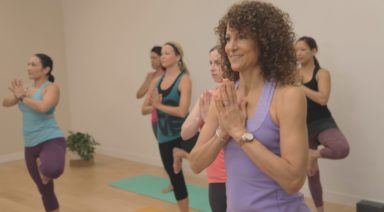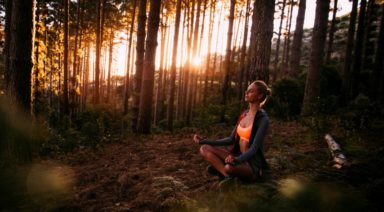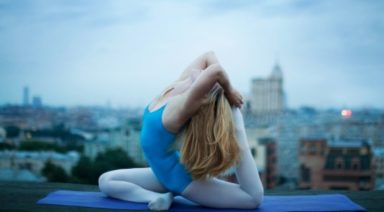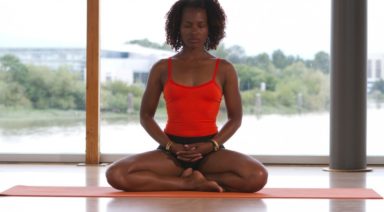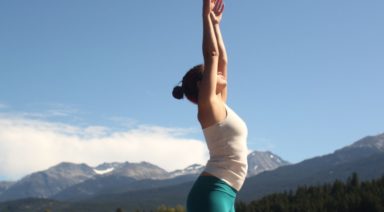Can Yoga Sculpt Your Body?

As a personal trainer and yoga teacher I often get asked this question: Can yoga really sculpt my body? The answer is yes. Yoga is a totally viable form of exercise.
Dr. Dean Ornish’s famous studies found that the relaxation you receive from practicing yoga and meditation are just as important for the prevention of heart disease as the fitness benefits of cardio. I started doing yoga because I wanted the yoga booty. Ultimately what keeps me going, over a decade later, is the sense of inner peace I feel after each and every class. You can’t mimic this same feeling after lifting weights for an hour. In our fast-paced world, this is the mass appeal of yoga.
Yoga lets you sculpt, tone, and mold your body using your body weight, instead of using weights to increase your muscle mass. This builds leaner muscles, with more natural tone and definition. Bone is living and is continually being absorbed and renewed. Weight-bearing exercise, like balancing on one leg in tree pose (vrksasana), puts healthy stress on your bones. This causes new bone to be laid down in the stressed areas, thus strengthening your bones and helping to prevent osteoporosis. Also, yoga moves your joints through a full range of motion. This helps in the prevention of osteoarthritis. As we become older, balance and coordination become a concern. Yoga helps us to keep our freedom into old age.
To really get a workout you need to up the intensity by practicing a more vigorous style of yoga like power vinyasa. You could also try holding postures for a longer period of time, or moving through the same postures several times.
Ultimately, yoga increases your body awareness and helps you to feel more comfortable in your own skin. When you feel good about yourself, you radiate that out into the world.
Yoga teaches us mindfulness. When we are mindful, we make better lifestyle choices. We eat healthier and drink more water. Overall, we are happier, kinder people. As your yoga practice evolves, so will you. Allow it to be an exciting journey into the deepest layers of yourself.
Try different styles of yoga to challenge your muscles in new ways. Keep your routine exciting and fun to prevent boredom.
Yoga: A Conversation with Your Body

When we do yoga we engage in a conversation with our body. I always encourage my students to observe, closely, what their bodies are telling them. Just in that moment, because change is constant. Do chair pose (utkatasana) hundreds of times and you’ll learn that your mind, body and emotions are always changing.
Standing in mountain pose (tadasana) encourages us to notice and to learn that we can stand alone, without support; that we can stand strong for what we believe in. Plow pose (halasana) puts us in a place where we can become introspective as we face our secrets– some delightful, some a little less so. What is our choice our response? In standing forward bend (uttanasana) or another pose like shoulderstand (salamba sarvangasana), we see the world from a different perspective. What is our interpretation?
I compare it to having a conversation with another person. We notice the body language. For example, someone taking a peek at their watch might want to be, or might have to be, somewhere else. They’re probably not fully present. Facing you directly with a relaxed stance means that they really are comfortable and interested in talking to you. These are all tiny little clues for understanding what might be going on in that person’s mind.
So is the case when it comes to the conversation we have with our bodies when we practice yoga. Perhaps, when scanning the body, you might find something a little rigid, or a little out of balance. What is the emotion behind that? What is your choice of response to that? Do you approach it with nonviolence (ahimsa)? Do you approach it with tenderness and respect? What if you found something that felt really good? Would you see it with truthfulness (asteya)? With non-possessiveness (aparigraha)? We need to learn to observe without judgement. Just like a witness.
Doing yoga, for me, is aparigraha. It’s about myself, and how I translate the world; understanding the choices I have and how I want to conduct myself. Learning is growing–the antithesis of stagnancy. You must learn about compassion for others, and learn to see others in yourself and yourself in others.
Use and share what you’ve learned as you go about your daily life.




